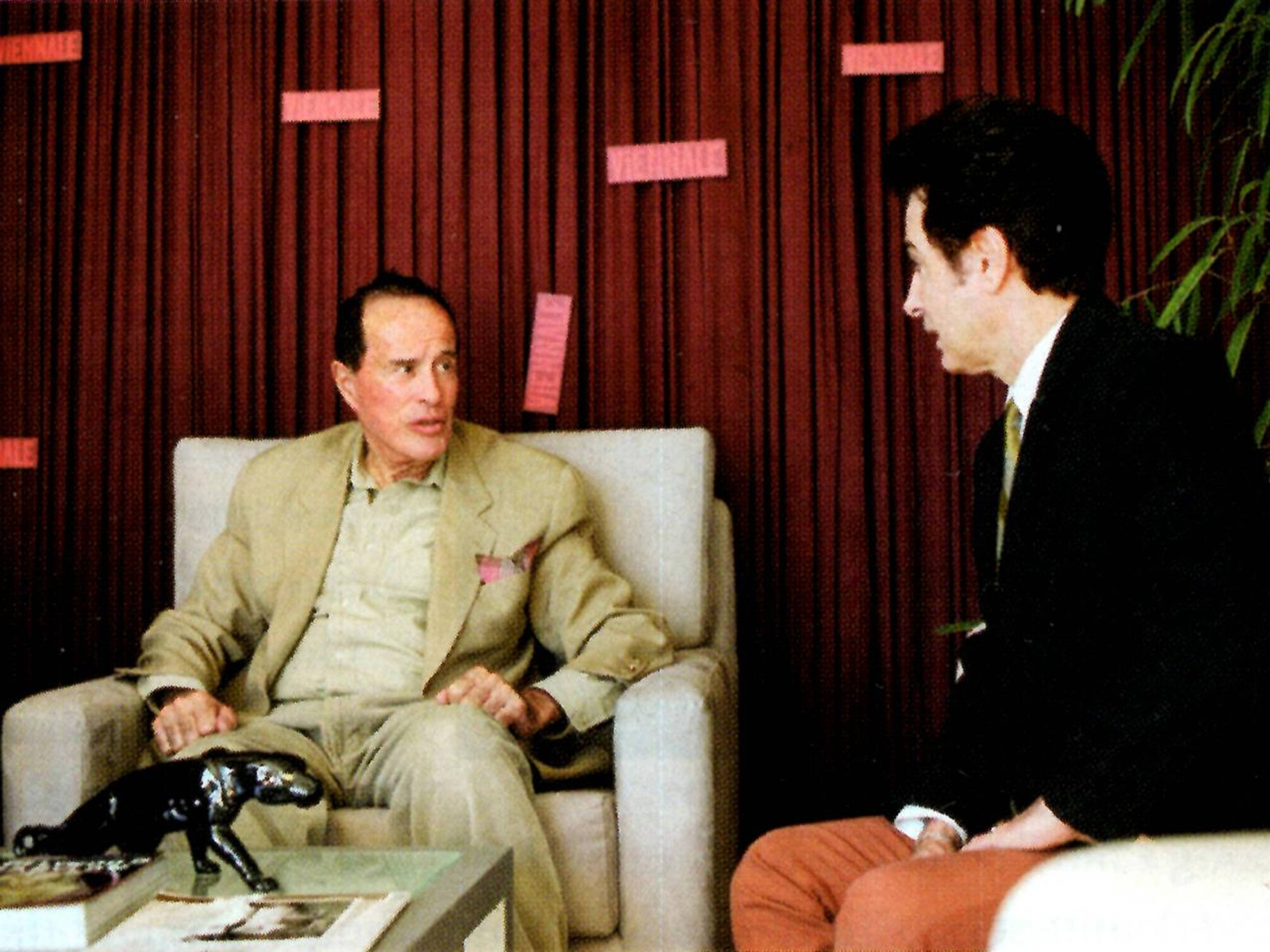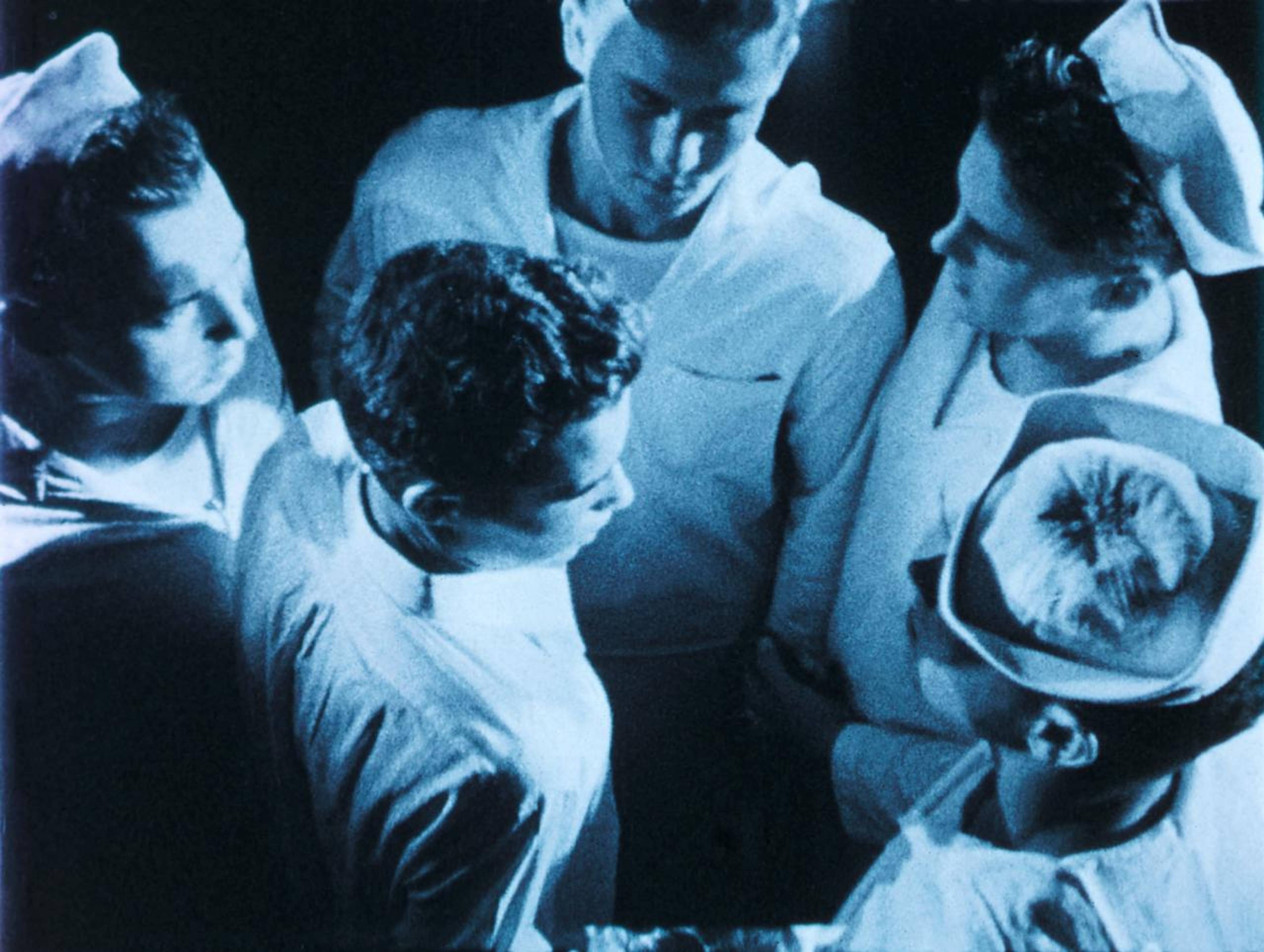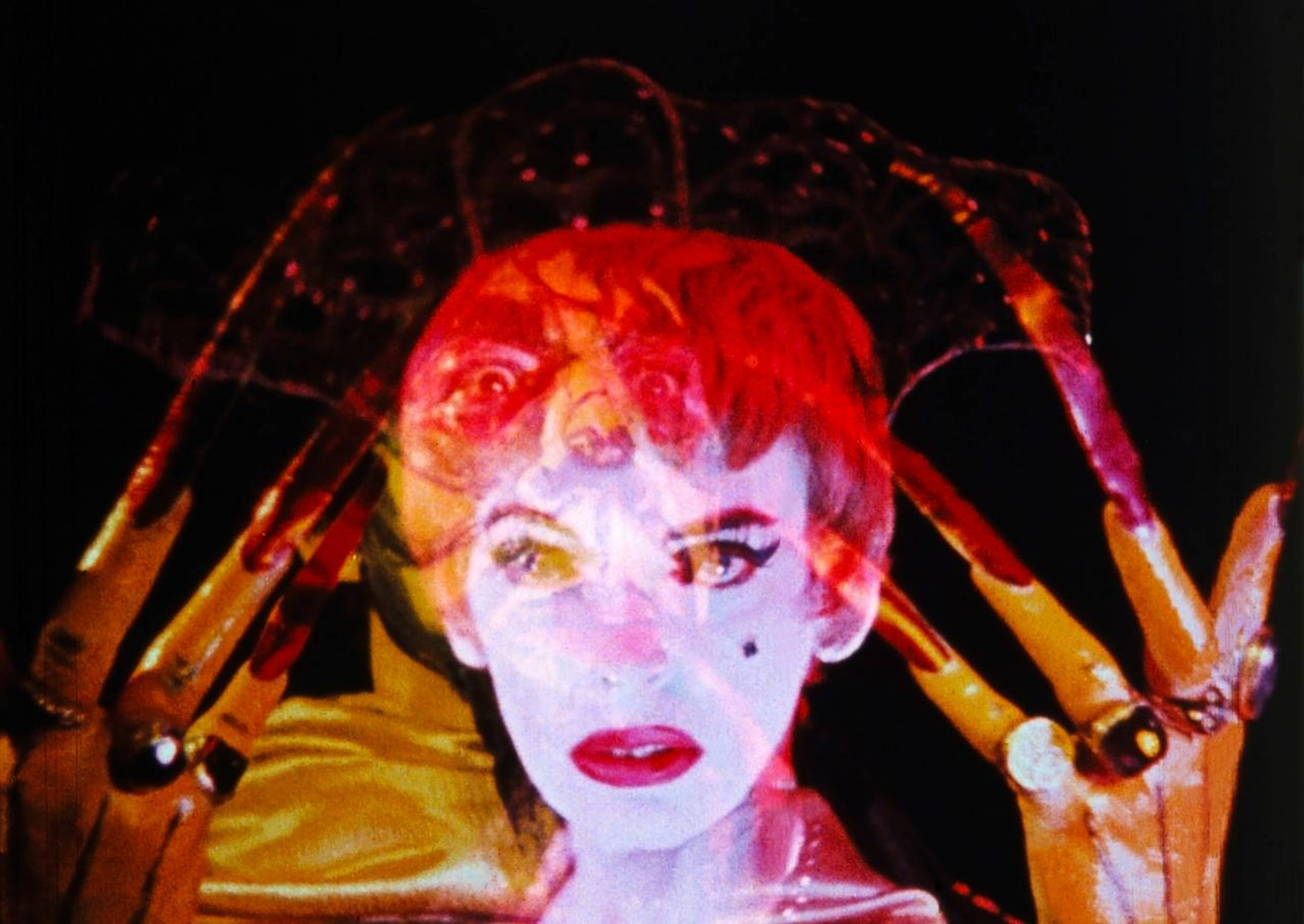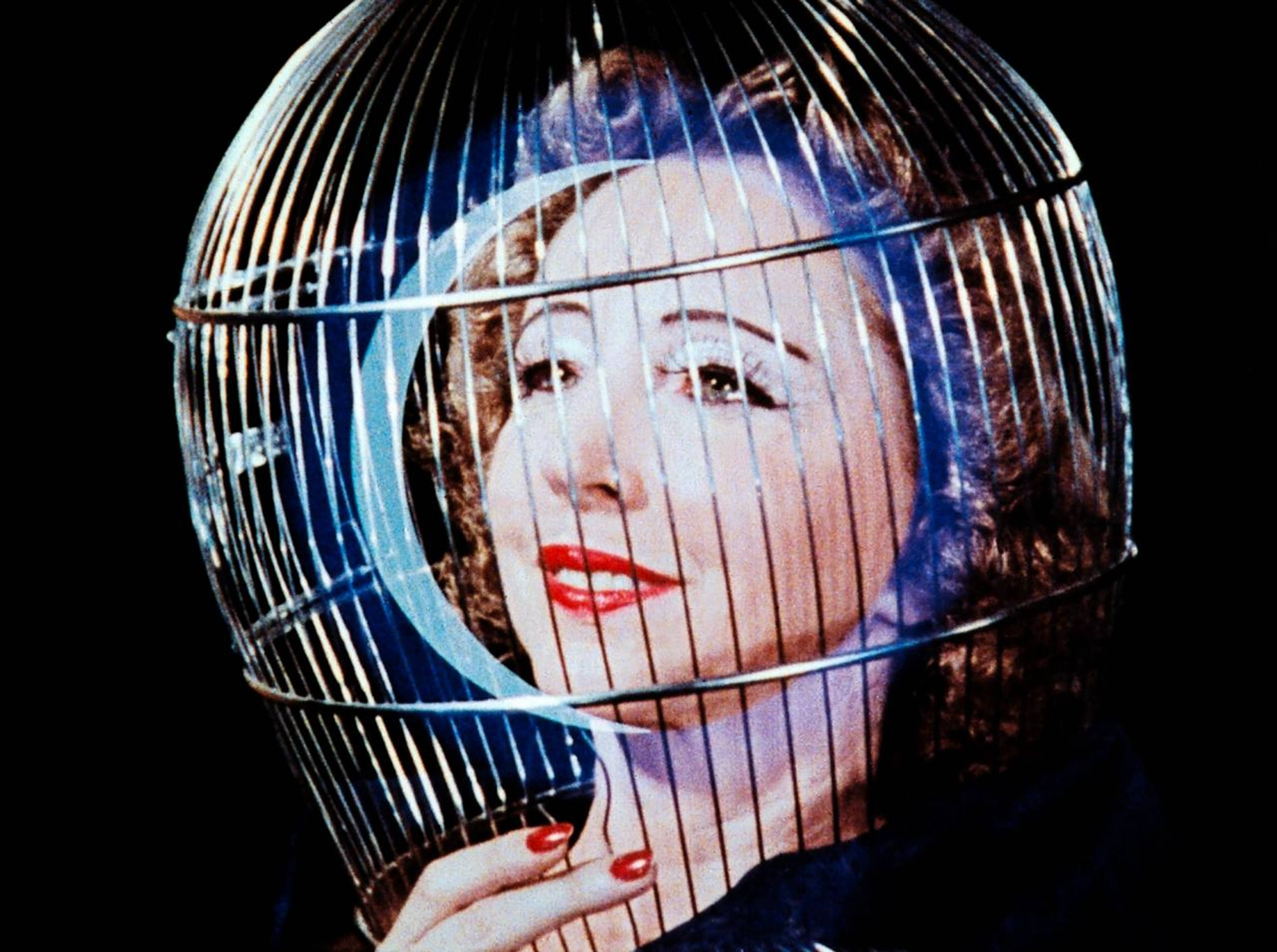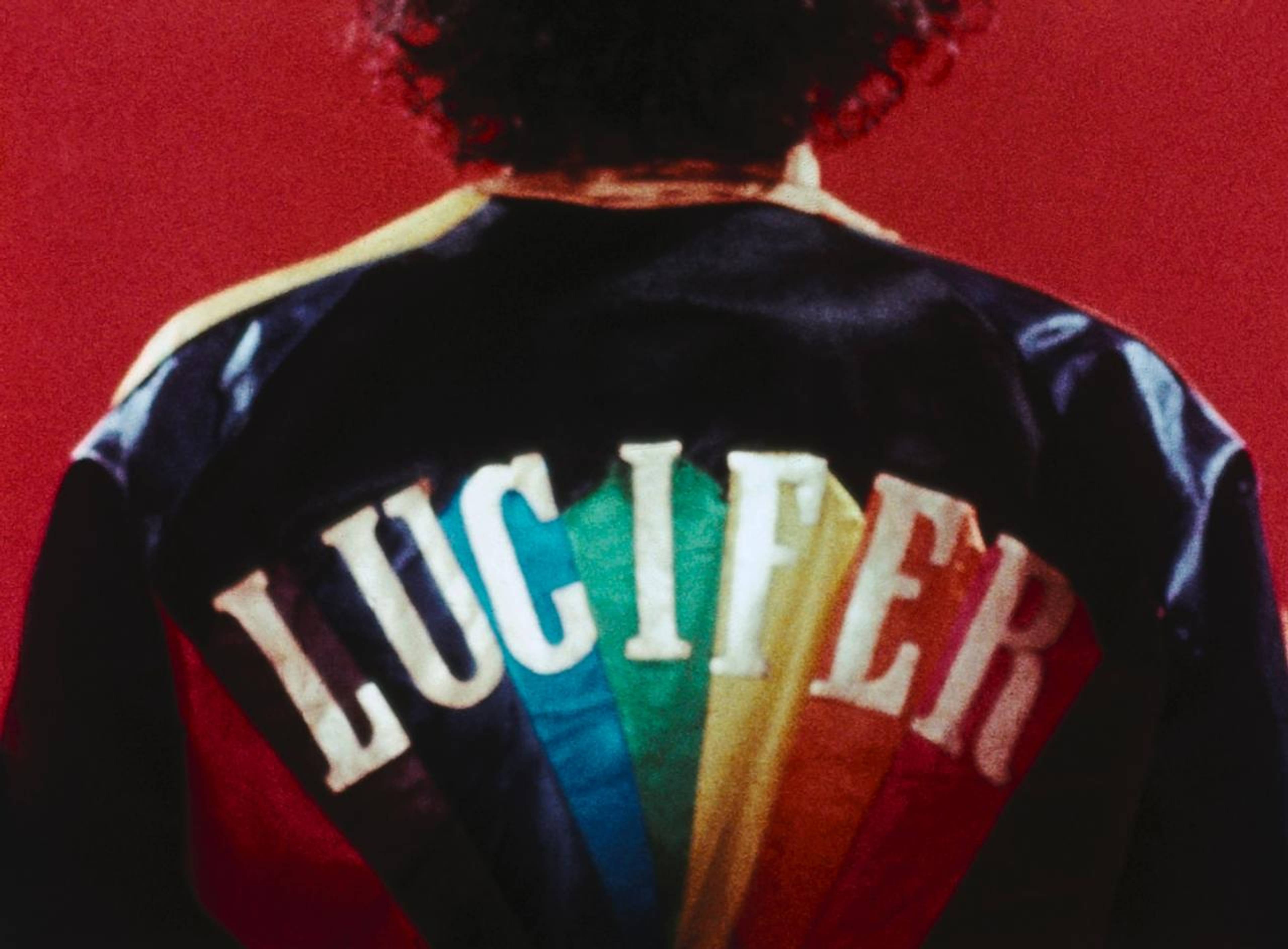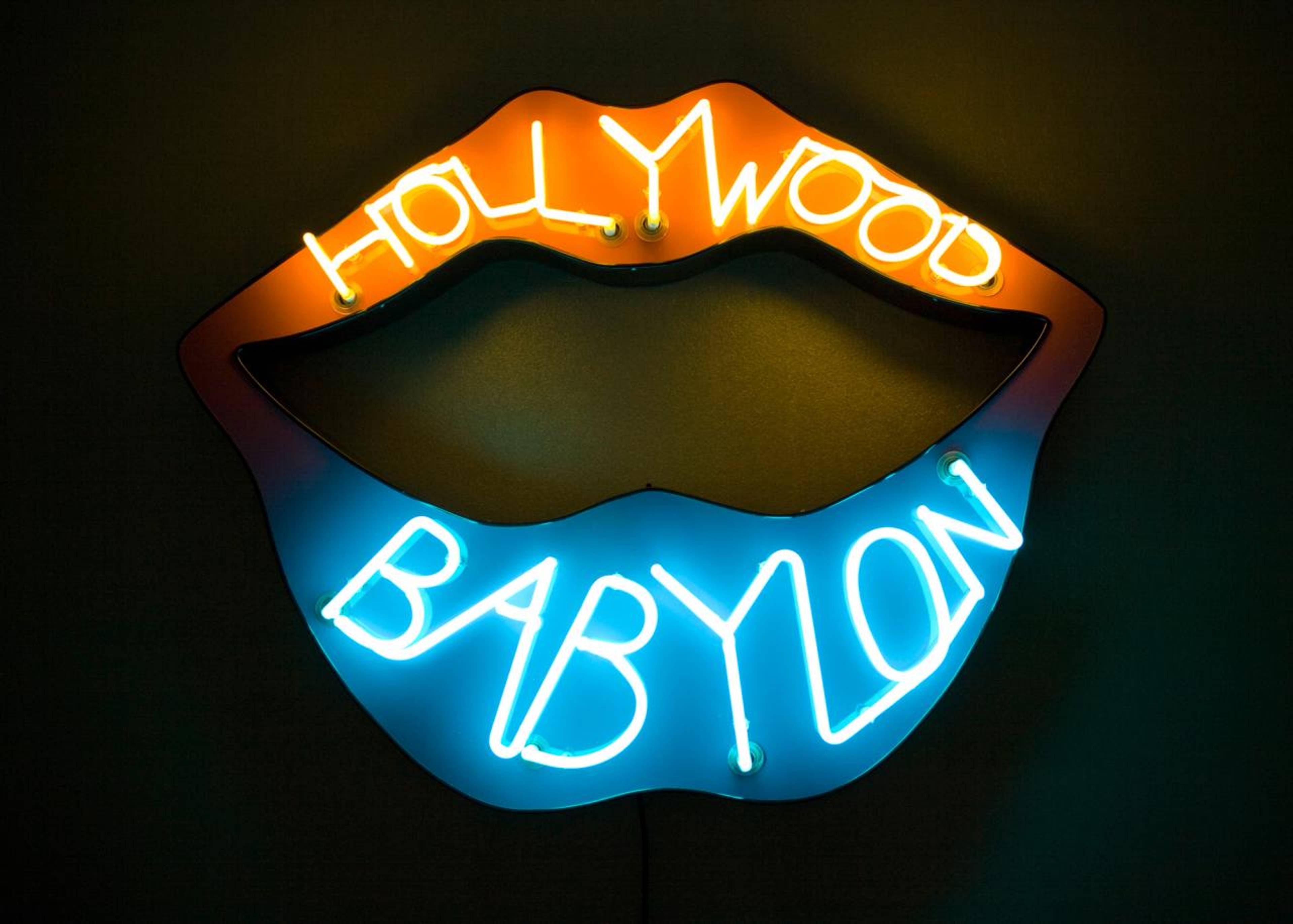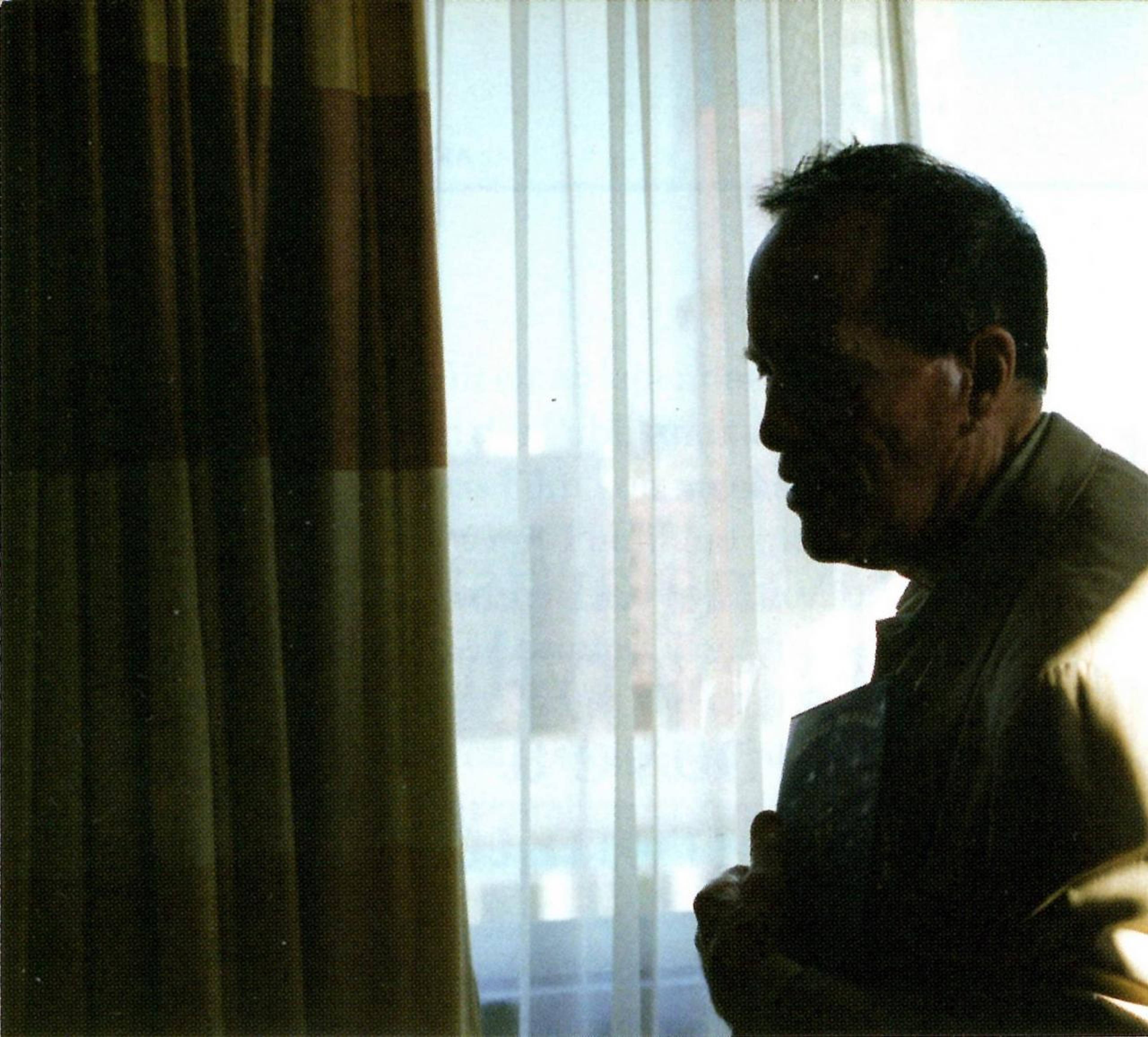In Kenneth Anger’s (1927–2023) short films, the underground, pop culture, and rock ‘n’ roll found their places on the big screen. Ahead of the 2006 Viennale, the iconoclastic filmmaker spoke with performance artist and psychedelic musician Tav Falco about silk flowers, vindictive scientologists, and refusing to hustle for production money.
Tav Falco: Good morning, Kenneth. I brought a little gift for you. (A ceramic of a black panther)
Kenneth Anger: You shouldn’t do that.
TF: I am not sure if you like him or not, if you do you can take him home to Hollywood.
KA: Really? Well, it’s fabulous. The black panther. It’s beautiful.
TF: I just acquired him in Paris, actually, last week.
KA: It’s beautiful. Art Deco. Have you seen the film with Maria Montez – Cobra Woman ? They showed a beautifully colored 35mm technicolor print from about 1944 at Universal Pictures last week here at the Viennale and I introduced it. It was escapist entertainment – a fantasy during World War II. This is pure escape about an imaginary island. You would love it. It has a black panther in it. Thank you so much. I’ll pack it very carefully. I’ll make a little cocoon.
Kenneth Anger, Fireworks, 1947, c-print, 85 x 110 cm. Courtesy: Sprüth Magers
Judith Fischer: When did you two meet each other the last time?
KA: I see Falco so rarely. Last time in Vienna. What year was it?
TF: It was 1995.
KA: That’s eleven years.
TF: Yes. And it was when Sixpack brought Kenneth Anger to Vienna. And they had a brilliant retrospective and published a publication. I have a copy – it’s one of my treasures.
JF: And you did work on a film project together here in Vienna …
KA: Well, I have not seen it.
TF: I sent you a copy on VHS. It’s just under five minutes.
KA: Did you? Did I receive it? I don’t think I’ve got it. ( Editor’s note: A music video for Tav Falco’s eighth album, Shadow Dancer – Love’s Last Warning , 1995, directed by Rainer Kirberg. Kenneth Anger impersonates the Magus )
Kenneth Anger, Puce Moment (Yvonne Marquis II), 1949, c-print, 85 x 112 cm. Courtesy: Sprüth Magers
TF: It was conceived as a little piece of cinema. But it illustrates a song composition of my band Panther Burns.
KA: We did it in the tiny, tiny bar of the Hotel Orient ( Editor’s note: a legendary Stundenhotel in Vienna where rooms are rented by the hour ) which is like a dollhouse. The whole hotel is like a dollhouse – the rooms are so small. But the bathtub is full size.
I saw Mae West’s bedroom on Rossmore Avenue at the Ravenswood Hotel where she lived and she invited me up and she was quite an elderly lady at the time, but she still was Mae West. And she had a mirrored ceiling over her bed and probably she got the idea from the Hotel Orient because they have one too. But that dates back to the 1890s or so – the idea of a mirror on the ceiling. And it was a pink mirror. It gave a rosy glow. And the whole bedroom was pink. Shades of pink. And I was disappointed in her because her place was full of flowers, looked beautiful, and they looked beautiful in photographs, and I went over to them and they were beautiful, artificial, made in France out of silk. Silk flowers. But she could have afforded to have fresh flowers every day. She said: “But these are less trouble.” And she had sprayed them not with the scent of roses, but with the exotic perfume called “My Sin.” I think it’s by Chanel. It was popular in the 30s. It makes you dizzy.
For a living artist, it brings everything to life to have a response from the audience, which turns film from a mechanical art into a live art.
JF: What I wanted to ask you is this: You both did remarkable work, and you are stars or legends, but you also keep on doing new work as artists. Maybe you could talk about your most recent projects?
TF: Well, I am simply a performer and not really a trained musician, although I picked up the guitar in this period, in the late 70s or early 80s, when visual artists and other kinds of people interested in expression would pick up an instrument and get in the middle and start doing something and that’s how the musical side of things happened. I was living in Memphis. I grew up near Memphis and what was around us was music, was rock and roll. I grew up on Jerry Lee Lewis and Elvis and Charlie Feathers. So picking up a guitar is a natural thing to do. But I don’t really consider myself a musician, but a performer. At present, for example, this year in April in Paris, there was an homage at the Cinémathèque Française dealing with six of our short films that now have been taken into the permanent collection, and there they asked me to come in person, and would I do something with the guitar and introduce the films? Instead, I delivered eight poems, some of which will probably become songs, one of which was written in French. It had a considerable impact. I am working toward the new album with Panther Burns, the one and only band I have ever worked with, Conjurations : Seance for Deranged Lovers , and then after this will be the project Shadow Dancer – The Movie – a film proposal dealing with the doppelgänger idea. The wonderful story of Peter Schlemihl – a tale of German romanticism. The man who sells not his soul, but his shadow. I want to treat this idea as an alternative underground fashion.
Kenneth Anger, Scarlet Woman (Marjorie Cameron), 1954–66, c-print, 85 x 116 cm. Courtesy: Sprüth Magers
KA: Is this your first feature length project? You made short films.
TF: Only short films. Under the influence of Mr. Anger in large part, actually.
KA: I also had several ideas and plans for long films, feature films including Les Chants de Maldoror , from the time I arrived in France, but the financing killed these projects and I am not good at hustling money, as we say. My pride won’t allow me. I call it “Rattling the tin can.” I can’t do it.
TF: I would like to work on 35mm film again. Forget Avid! If I get to work with film again, I want it all to be on film right down to the last iota, and then maybe the final print can be transferred to video or some other form.
Kenneth Anger, Astarte (Anaïs Nin), 1954–66, c-print, 85 x 110 cm. Courtesy: Sprüth Magers
JF: UCLA film archivist Ross Lipman gave a little speech in your honor yesterday at the presentation of newly restored prints of some of your earlier films ( Fireworks , 1947; Rabbit’s Moon , 1950/1971; Scorpio Rising, 1963; Kustom Kar Kommandos , 1965). How was it for you to attend this screening of the new prints?
KA: Well, it was beautifully projected. I had an audience that gave me good vibes. I got very good energy from the audience. For a living artist, it brings everything to life to have a response from the audience. So that turns film from a mechanical art into a live art, with the audience. It can be ruined by a projection being out of focus or having bad sound. There are all these little things waiting to ruin it, to mess it up. So the final presentation is as important as any other step.
JF: There is this tendency in the fine arts towards experimental film, performance, music, artists who form bands… Do you have any experience with a fine arts audience? Do they react in a different way to your films, your performances?
KA: I am always personally glad to find new eyes that see my things for the first time or aren’t familiar and find something that they can like about them or that fascinates them. That’s fine with me. I have had that experience in a graphic arts school and they see the possibilities of using film in a different way than the films they are used to when they go to a theater.
I am an LHD, which is a Doctor of Humanity or something. It’s not LSD… I use the “Dr.” title when I give a lecture because I can charge more. And then I have a little bookmark – it says: “Dr. Anger.”
JF: You never taught?
KA: I refuse. I was offered to teach at an exclusive school in New York State called Bard College. But I was living in New York City at the time, and I didn’t want to live at Bard. The idea of me teaching twenty students… I met them and frankly I decided that I would be bored with them after a semester. They were like rich New York kids who already felt they knew more than I did. And they said, “Do we have to make movies like you?” And I said, “No. You should make movies with whatever you find in yourself. And my idea is not that I am imposing my aesthetic on you.” I don’t think that I have a consistent enough personality to teach. I never have. And, of course, teaching is the last refuge of the independent filmmaker who is having a tough time. I can name two or three others. After they became teachers, they seemed not to make any more films. It’s nice to get a check and have something reliable – but I don’t fit into that slot. I prefer to be an outsider. I was made an honorable doctor at the Art Center College of Design in Pasadena, California, which is quite a prestigious school. I am an LHD, which is a Doctor of Humanity or something. It’s not LSD … I use the “Dr.” title when I give a lecture because I can charge more. And then I have a little bookmark – it says: “Dr. Anger.”
TF: When I met you Kenneth, a few years back, you were talking about Mickey Mouse and a film you were planning…
KA: (presents a DVD): Here it is. Mouse Heaven . I’ve completed it, and it’s ten minutes long. (Editor’s note: It’s a musically structured documentary about a private collector of early Mickey Mouse puppets and paraphernalia shot on 16mm) Of Mouse Heaven, I will sell ninety-three DVD copies – that was Aleister Crowley’s good luck number. Anyway, I don’t look forward to the digital future.
Leslie Huggins as Lucifer in Kenneth Anger's Lucifer Rising, 1972. Courtesy: Sprüth Magers
TF: I prefer the analog. But it’s a problem to work in the analog, at some point you have to digitalize it for diffusion purposes or to circulate it…
KA: In Mouse Heaven , Sir Paul Getty was the producer. He died before I could show him the finished film. He was a good friend of mine.
JF: Your notorious book Hollywood Babylon Part 1 & 2 will be published in a German translation at Rogner & Bernhard in November. Did you ever write a third part of Hollywood Babylon?
KA: Yes. But for legal reasons, it is not published, because they want me to cut out my section on Scientology and L. Ron Hubbard and L. Ron Hubbard’s relationship with Jack Parsons, who was killed in an explosion. He was the husband of my friend Marjorie Cameron, who played the Scarlet Woman in my film Inauguration of the Pleasure Dome (1954/1966), and it becomes quite a complicated story. You see, the Scientologists are very vindictive.
Kenneth Anger, Hollywood Babylon, 1975/2000, neon and plexiglass, 87 x 110 x 15 cm. Courtesy: Sprüth Magers
JF: You dedicated Hollywood Babylon “To the Scarlet Woman”…
KA: Yeah. In Germany, the Scientologists are seen as a cult, a sect.
TF: So Parsons was a rocket scientist?
KA: Parsons has a crater named for him on the dark side of the moon because he invented the actual fuel that took the Apollo to the moon. And he was killed in an explosion in his home – he had his own lab at his home. He died at thirty-six, which is very young for a scientist. I talk about all those things in the book and it reflects badly on L. Ron Hubbard – the founder of this bogus church, which is just a con scheme to get money away from terrified people. Tav, have you seen Salome (1922) with Alla Nazimova? She is wonderful. And the film was a total failure and ruined Nazimova’s reputation. Suddenly she was box-office poison. Salome killed her career and made her bankrupt and she ended up having to sell her home, which was called The Garden of Allah on Sunset Boulevard. Today it has been totally destroyed – it is now a shopping mall. Very famous people lived there before it was torn down. Homes which have a historic value are torn down all the time.
JF: Thank you for the interview.
Kenneth Anger at the 2006 Viennale. Photo: Wolfgang Thaler
___


